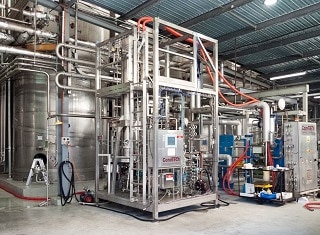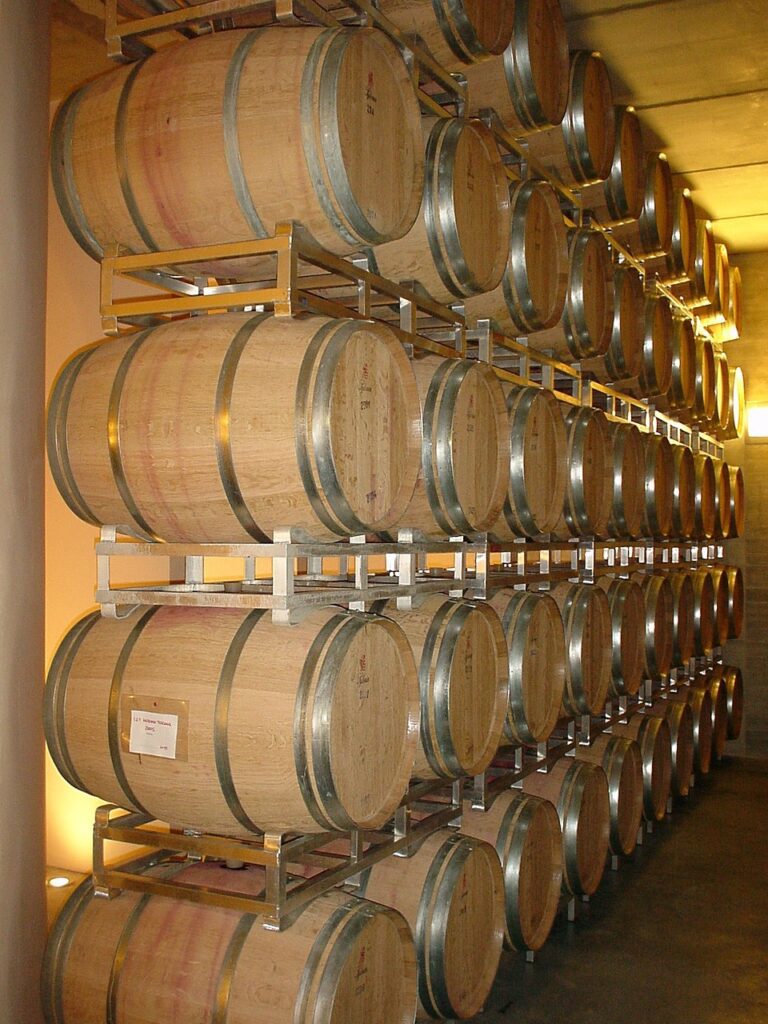Winemakers usually do not prefer wines with no or low alcohol. The reality is however that the consumer’s preference for such wine has increased considerably. Winemakers must consequently caution against their personal preferences forcing consumers to investigate other products.
The emphasis on fruit-driven wines, made from optimally ripe grapes, has caused an increase in the alcohol concentration of especially red wines over recent years. This is however contradictory to the increasing health awareness of consumers and the calling of health institutions to decrease alcohol consumption. The “New Zealand Lighter Wines”’ research project did pioneering work regarding the successful making of wines with no or low alcohol. The alcohol concentration of wines can be decreased by viticultural practices, cellar techniques, alcohol removal after fermentation or a combination of these. It is also important to determine the influence of alcohol on the sensory properties of wine. A decrease in alcohol concentration from 12.2 to 9.5%/vol increases the perception of acid, but decreases the perception of sweetness, bitterness, body, smoothness and after taste. The formation of flavour substances, phenolic ripeness and acid reduction are however independent of each other. Lowering the sugar concentration of grapes when harvested, without causing an imbalance with other grape components, is the first step to result in a lower alcohol concentration. This includes amongst other things an adjusted irrigation protocol, topping of shoots, lighter pruning and earlier harvesting. Initial research indicated that leaf picking of the canopy at certain stages delayed the accumulation rate of sugar in the grapes, although such grapes still tasted ripe. Different vineyard practices were also investigated to determine which must be applied to delay the ripening, in order to obtain a lower sugar concentration with sufficient flavour and acid concentrations. Clones that produce lower acid concentrations are also preferred, because acid management is one of the most challenging aspects of the making of wines with lower alcohol concentrations. Initial research indicated that the correct management of terrain, ripeness and diminishing leaf surface combinations make it possible to produce acceptable wines, with an alcohol concentration lower than 10%/vol.
The research regarding viticultural aspects was succeeded by the following cellar aspects:
- The influence of skin contact on the decrease in structure and body of wines.
- The optimal fermentation temperature to limit alcohol formation, but retain the desired texture and flavours.
- The influence of different inoculation methods to keep alcohol formation as low as possible.
- The use of Saccharomyces species other than Saccharomyces cerevisiae for fermentation.
- The role of oxygen during fermentation.
The combination of vineyard and cellar practices has made it possible to lower the alcohol concentration of wines incrementally. Sauvignon blanc and Pinot gris wines with alcohol concentrations of 9.0 to 9.5%/vol can be produced successfully in these ways. In wines with lower alcohol concentrations it is difficult to retain all the cultivar characteristics of such wines. It becomes even more difficult to retain standard wine characteristics the lower the alcohol concentration becomes.
The reduction of the alcohol concentration of wines after alcoholic fermentation can be done by different physical processes. It is usually done in two stages, firstly the removal of the alcohol in liquid or gas form by reverse osmosis, nanofiltration or low speed centrifugation and secondly the concentration by means of distillation, vacuum distillation or perstraction. Reverse osmosis uses membranes with different permeability to separate compounds with different molecular weights by applying pressure, which is higher than osmotic pressure in order to prevent the normal osmotic transfer. Nanofiltration also uses membranes to separate compounds with different molecular weights, but other than reverse osmosis the separation can be done at a pressure lower than 2 500 kPa. The concepts of permeate and retentate are important in reverse osmosis and nanofiltration. The permeate is the liquid, which as result of the applied pressure moves from the wine through the membrane and the retentate is the liquid remaining in the wine. By removing the alcohol from the permeate by distillation or perstraction, the remaining de-alcoholised permeate can be added back to the wine retentate and the alcohol concentration of the wine is consequently reduced. The spinning cone process uses low speed centrifugation and vacuum distillation to remove the volatile components, alcohol and flavour substances. The alcohol and flavour substances are subsequently separated, whereafter the flavour is added back to the wine. With this process alcohol can be removed completely from wine.
Reverse osmosis and nanofiltration are mostly used for alcohol adjustments instead of complete alcohol removal, because the latter may lead to a decline in sensory characteristics. The spinning cone column is mostly used for de-alcoholising to an alcohol concentration level of 0.5 to 0.05%/vol. It is not a drastic process, which is executed at a low temperature. The purchasing price of the equipment is however very high. (In South Africa a column is available which can be rented at operating cost.)
In order to obtain sufficient wine character in de-alcoholised wines, the greatest challenge is to create a structure which is usually fulfilled by the alcohol in wine. Products like grape skin extract, tannins and grape juice concentrate can be used, but the latter is unacceptable if the emphasis of the alcohol-free “wine” is on its health benefits. Sparkling wines and white wines are more suitable for alcohol reduction than red wines, seeing that the alcohol plays a more important role in the texture of red wines.

Spinning cone equipment for alcohol removal.
References
Logan, S., 2021. Aim high – go low. Australian Grapegrower and Winemaker, July 2021: 53 – 59.
Logan, S., 2021. In pursuit of the holy grail – the challenge in making good quality, no and low alcohol wines. Australian Grapegrower and Winemaker, August 2021: 82 – 87.
Longo, R. & Gore, R., 2021. Commercial wine alcohol reduction strategies with a focus on evaporative perstraction. Australian Grapegrower and Winemaker, August 2021: 78 – 81.













